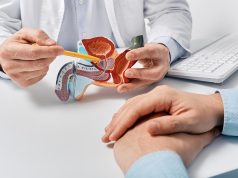After 10 years, objective and subjective cure rates were 69 and 64 percent, respectively
FRIDAY, Sept. 16, 2016 (HealthDay News) — The tension-free vaginal tape-obturator procedure is usually still effective at 10 years after the procedure, according to a study published in the October issue of The Journal of Urology.
Daniela Ulrich, Ph.D., from the Medical University of Graz in Austria, and colleagues examined subjective and objective cure rates 10 years after a tension-free vaginal tape-obturator procedure was performed in 124 patients. Overall, 49 percent of the 112 women who were alive were available for clinical examination and 63 percent completed questionnaires.
The researchers found that the objective cure rate was 69 percent in the 55 women who were examined clinically; 22 percent were not cured and 9 percent had undergone reoperation for recurrent or persistent stress urinary incontinence (treatment failure). Sixty-four percent of the 71 women who completed questionnaires reported subjective cure. Five percent of patients had vaginal tape extrusion at the time of clinical examination; in all these women the extrusion was small and asymptomatic and did not require treatment. The cumulative extrusion rate was 7 percent. Overall, 9 and 26 percent of women, respectively, underwent reoperation for tension-free vaginal tape-obturator-associated complications and experienced de novo overactive bladder.
“This long-term cohort study suggests that the tension-free vaginal tape-obturator procedure is a relatively efficient treatment of female stress urinary incontinence in the long term,” the authors write.
One author disclosed financial ties to Covidien and Roci.
Copyright © 2016 HealthDay. All rights reserved.








